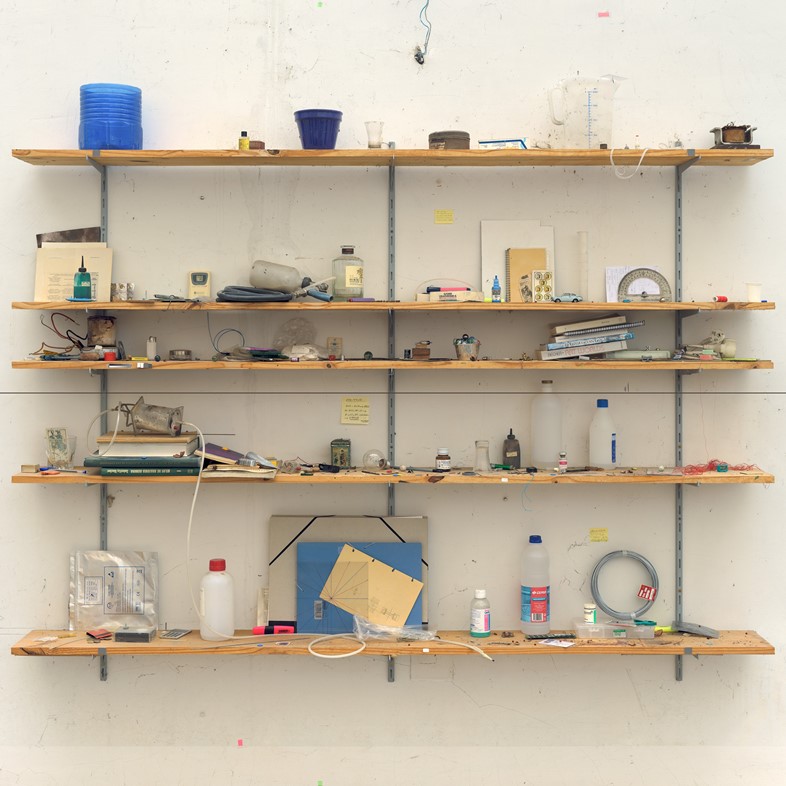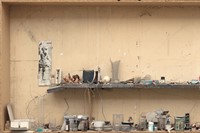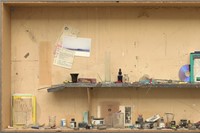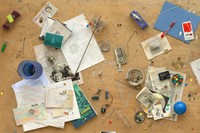We speak with artist Manuel Franquelo, whose newly opened exhibition at Michael Hoppen Gallery showcases meticulously detailed work documenting the sublime nature of insignificance
It’s not often that images of dirty studio floors and shelving units full of everyday detritus manifest as something that borders on the sublime. Which is why Manuel Franquelo’s exhibition at Michael Hoppen Gallery, titled Things in a Room: An Ethnography of the Insignificant, feels particularly special. At first glance, you might be fooled into thinking that the large-scale images hanging on the gallery’s walls are hyperreal paintings paying homage to the likes of Chuck Close or Richard Estes. But you would be mistaken: for they are, in fact, photographs presenting as painterly surfaces via the technique that the artist employs to create them. Although, Franquelo was uncharacteristically reluctant to reveal his methodology: “It is probably not very helpful to discuss how things have been made. I believe that the idea of ‘seeing behind the scene’ is just a fallacy, an illusion popular in TV shows made for entertainment. It is just not possible to be in the position of the author seeing through his eyes and thinking with his brain,” he explained.
However, Franquelo (whose background in engineering most likely accounts for a mathematically inclined eye) was producing such paintings prior to picking up a camera, earning him the title of one of the most important photorealist artists practicing today. But, he grew tired of such labels, turning to the medium that he so often replicated in paint for his latest series. “On this project I turned to photography because, with independence to authenticity, this medium always recalls the ‘having-been-there’-ness of the trace. At the same time, and on a very different level, I really wanted to stay away from the idea of manual skill as art. People were starting to interpret my paintings in this way and this was not really how I wanted to be seen.”
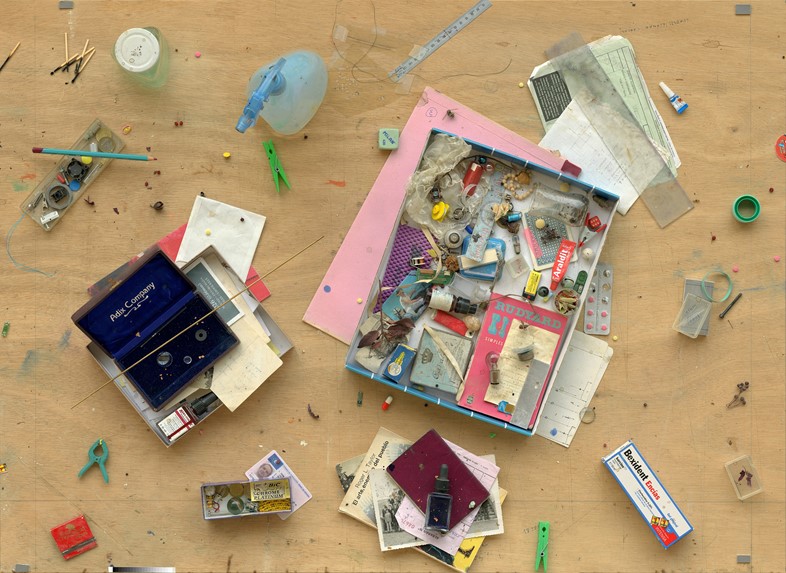
Each image that Franquelo produces is a snapshot of the studio in which he makes his work, documented over a period of many months. Consequently, these images become a mind shattering microcosm of the traces that we leave behind, and to spend a while gazing at his photo-series feels as overwhelming as looking at any conventionally awe-inspiring landscape. Upon closer inspection, one picks up upon such nuances as tiny splodges of paint; a miniscule broken perfume sample bottle with the spring mechanism protruding from where its diffuser once was; a pellet of chewing gum; and even an eyelash, the latter provoking thoughts of the skin and hair we shed on a daily basis, as though life were a crime scene and we simply exist to provide the evidence.
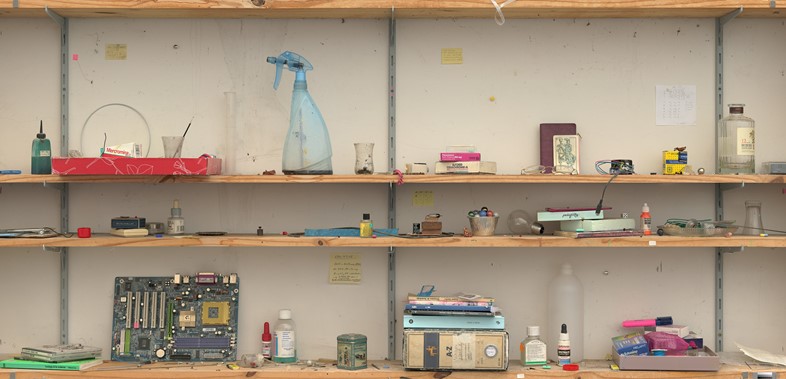
Franquelo stands in opposition to the idea that these objects were even trivial to begin with. “Minuscule details, like eyelashes and tiny dots of paint, and the idea of the insignificant are not the same thing, necessarily,” he insists. “The slow passing by of immense clouds can sometimes be insignificant too. Obviously what truly makes something significant is the viewer’s interpretation of what they are looking at; it is not determined by size. In our everyday life, noticing minuscule details is not difficult; it is just a question of getting closer. Noticing the insignificant requires a much bigger concentration and effort.” And surely this is what Franquelo is asking us to confront in his work – for to conduct a thorough examination requires an immense amount of focus and an ability to confront the overwhelming volume of ‘stuff’ present in the world. And, it must be said, they really have to be seen in person to be believed.
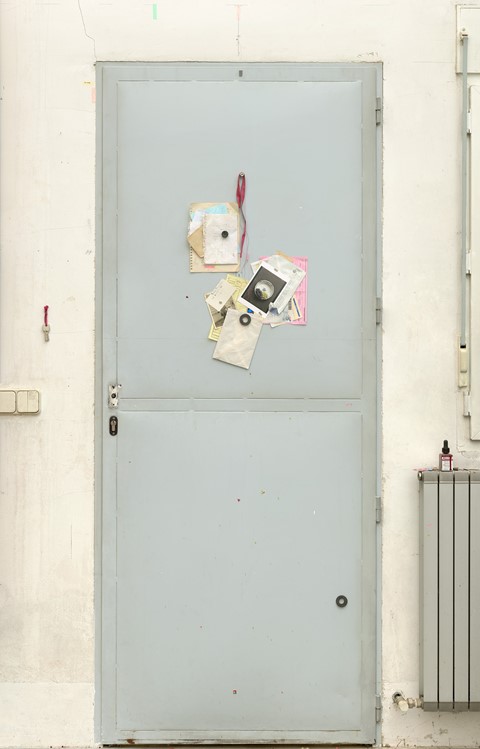
Things in a Room: An Ethnography of the Insignificant is open at Michael Hoppen Gallery until April 12, 2017.
